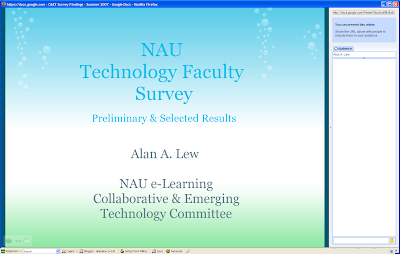
I highly recommend listening to this interview on ITConversations:
- Interview with Gardner Campbell (English Professor, University of Mary Washington) - on John Udel's Interviews with Innovators podcast
- UMWBlogs - mentioned in the interview
While I have no background in the arts, I think I agree that literature and the arts need to be free of boundaries. However, I believe that the sciences require a formal knowledge foundation, including formal forms of communication. Only then can creative insights expand the boundaries of our knowledge.
I agree with his comments that social media requires some new writing skills, and that this new medium can generate creative and new depths of communication. But as the editor of an academic journal in the social sciences, I think there is a necessary role for teaching formal rules -- especially writing. Even Wikipedia is trying to get its articles written in a more formal and academic manner.
Unfortunately, there are few more frustrating challenges for me than the poor writing ability of many of my students. If they cannot write a coherent sentence and paragraph (let alone a whole paper), then they will not be able to effectively communicate in the real world when they graduate. You cannot gain professional respect unless you are able to write to the level of your professional peers. And I am always wonder just what my students are being taught in those required English classes that they take.
Finally, I agree with his chagrin over a computer system designed to automatically grade essay exams -- and its tie to a textbook publisher. At the same time, as a former department chair in a publicly funded teaching university, I am aware of the demand from state legislators for faculty to teach as many students as possible in the most efficient manner possible. Departments that do not play the game risk the loss of faculty positions and degree programs.
Structure vs Agency
I think that there has always been a tension between structure and creativity in education (e.g., the old "structure vs agency" debate). I see it in the kindergarten classes that my wife used to teach, and I have seen it on graduate research committees. I think that the reason why the US higher education system has been so successful is because this tension is recognized and accepted, if not always appreciated (physical sciences are always better funded than social sciences and the arts).
It should be no surprise that these same tensions arise in the use of social media tools in education. To me, social software is a tool. How it is used is up to the instructor. Many of the the potential uses of social software actually evolve out of collaborative learning and student-centered learning, on which many books have been written in the past several decades, and from which those of use who teach mostly online have a wealth of knowledge to draw upon.
So anyway, it was a thought provoking interview -- and one that took me away from an encyclopedia article that I am working on, that is already past-due to the editors!












